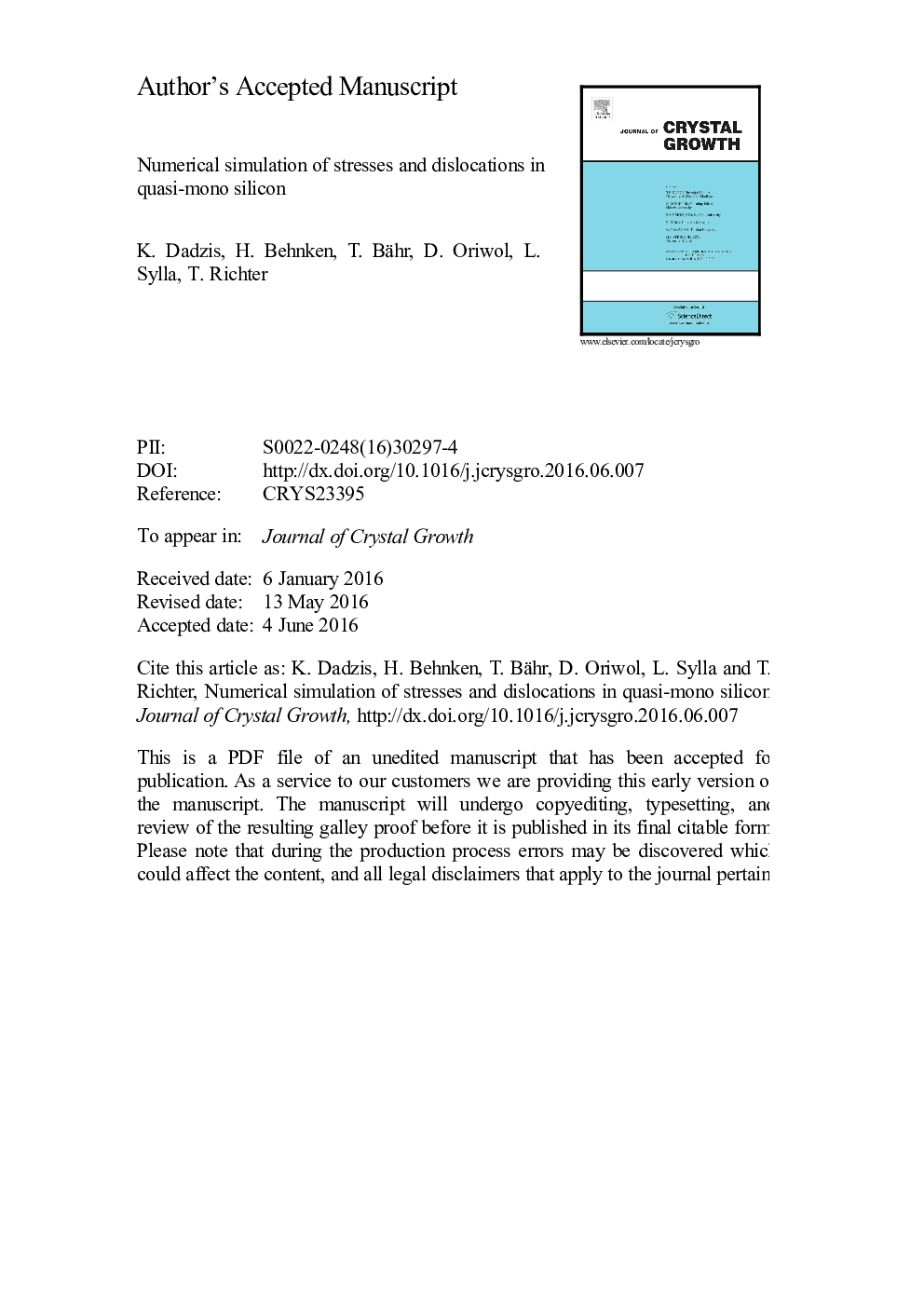| Article ID | Journal | Published Year | Pages | File Type |
|---|---|---|---|---|
| 8149293 | Journal of Crystal Growth | 2016 | 30 Pages |
Abstract
The Alexander-Haasen model is applied for the analysis of dislocation dynamics in quasi-mono crystalline silicon. Model constants are re-calibrated using stress-strain measurements on small silicon samples under uniaxial compression. It is observed that the activation energy may decrease at low temperatures and the hardening parameter generally increases due to the presence of grown-in dislocation clusters. The calibrated model is applied to an idealized cooling process which allows for a discussion of the basic physical mechanisms leading to residual stresses in quasi-mono ingots. Residual stresses can be reduced by minimizing thermal stresses during the elastic-plastic transition, which was observed approximately between 1100 °C and 750 °C in the present case.
Keywords
Related Topics
Physical Sciences and Engineering
Physics and Astronomy
Condensed Matter Physics
Authors
K. Dadzis, H. Behnken, T. Bähr, D. Oriwol, L. Sylla, T. Richter,
